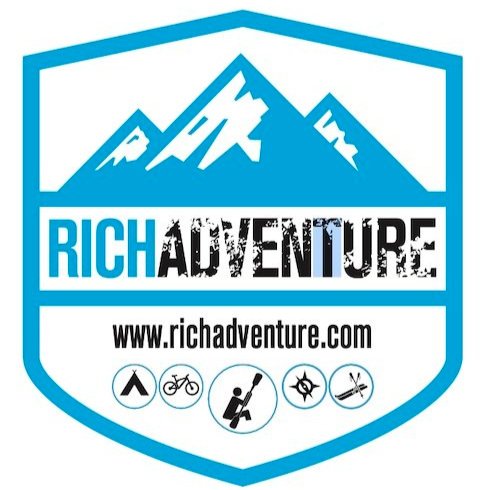Need versus Want on Human Powered Expeditions
I thought it might be also helpful to identify a few of the choices and critical decisions that you need to consider before planning and executing an adventure or journey. It is a strange fact about life on the road that nothing weighs very much but put together in total it becomes heavy. I have never been in the school of thought that logs weights on spreadsheets or cuts my toothbrush in half. However I do think that some key choices will affect how you complete your journey. Time, weight and space are all factors to be aware of.
· Jet Boil Versus Trangia
I have a number of simple gas powered systems such as a Jetboil or lightweight gas burner that allow me to boil water to make drinks and also simple foods such as noodles, pasta and expedition rations. On longer trips and where weight is less crucial I prefer taking a kit like the Trangia with various pots and you can create a wide range of culinary delights like home cooking.
· Bivi Bag versus Tent
There is nothing better than finishing a long day on the trail and climbing into a bivi bag, it is simple and feels very rewarding. My bivi bag has various zips and mesh nets to keep bugs out and control temperature. It can of course be used alongside my tarp to increase the protection to the elements. On longer trips this can be less appealing particularly with more kit and inclement weather. So this means I do still opt for a tent on many trips for prolonged comfort. A geodetic tent design (free standing) can be helpful for rocky or sandy terrain.
· Pannier versus Bikepacking
Many of my earlier bike trips involved using conventional pannier systems but as I got involved with the Salsa Bikes I discovered a new way of adventure travel called Bike Packing. This involves packing the kit and weight in a more balanced way. My last trip to cycle part of the Sahara involved me using Salsa’s ‘anywhere cages’ on the Fat Bike to strap stoves and kit to the front forks. I also positioned a dry bag as my main front load carrier on the handlebars and another pack on a rear seat rack.
· Expedition Food versus Going Local
Many of my expeditions have been driven by a demanding schedule, usually a reasonable distance in a short space of time. This means reducing time for preparation and cooking and less weight. This often leads me to using dried ration packs and energy drinks sachets to supplement calories and nutrients. On more relaxed trips and journeys then I have begun to eat more local cuisine where possible. I take particular delight in tucking into Bananas, Avocado’s and Oranges, all of which come in their own protective wrapper. Obvious in cold climates then calories and hot meals need to be considered.
· Camping versus Credit Card Camping
There are times where credit card camping can be a hugely positive experience allowing you to see new lands and cultures but at the same time reducing the need to carry all your kit. It can also help ensure your blogs and social media are up to date and also seriously improve your hygiene with more showers, provide greater rest and help when spirits are low. That said all of my best moments on the road are from the most iconic wild camping sites. So go explore.
· Travelling Light versus All Mod Cons
Travelling light has benefits when trying to cover distance against a schedule or just reducing clutter. It is always a mystery to me that I can lose certain kit in my rucksack or panniers. Some of the benefits of carrying more kit can be less discomfort, having spares for different eventualities, and additional electronic kit to capture your journey such as Garmin GPS, Camera kit (I use bullet cameras, an Olympus Tough Camera on a camera harness) or my MAC Air to write and upload blogs. I find this always links back to the plan for the trip or adventure. One lesson I have concluded is to avoid journeys which need a support team as this removes part of the real sense of freedom of the open road.
· Layering Systems
Layering systems are really important to be able to regulate temperature especially when working hard. On the Sahara trip we went from blizzards n the mountains to the dry arid conditions of the desert. We used a combination of layers including bamboo base layers, Paramo Down jackets (invaluable), Buff headwear, tights, cycling shorts (mine are synthetic and are still going strong after nearly 3,500 miles), ¾ length strides and wool socks. At times we wore almost all our kit and even slept in layers in our sleeping bags.
· Fat Bike versus other bikes
The choice of bike obviously affects cruising speed, distance, comfort and a whole host of factors. I would recommend trying the bike before you commit to the schedule. Our Fat Bikes for the Sahara weighed over 35Kgs without water and food but allowed us to cycle on sand to some degree (they were originally designed for the snow of Alaska). Cycling London to Marrakech I opted for a cyclo-cross bike which was tough and avoided punctures and buckles but also allowed a good cruising speed. I have found that different bikes are better suited to different challenges and can allow previously virgin terrain to be conquered.
Hopefully there are a few gems of usual information for you to dream, plan and execute your own adventure by bike. Of course the most important lesson is that “The Best Adventure is the one that you take..Start Now”.
